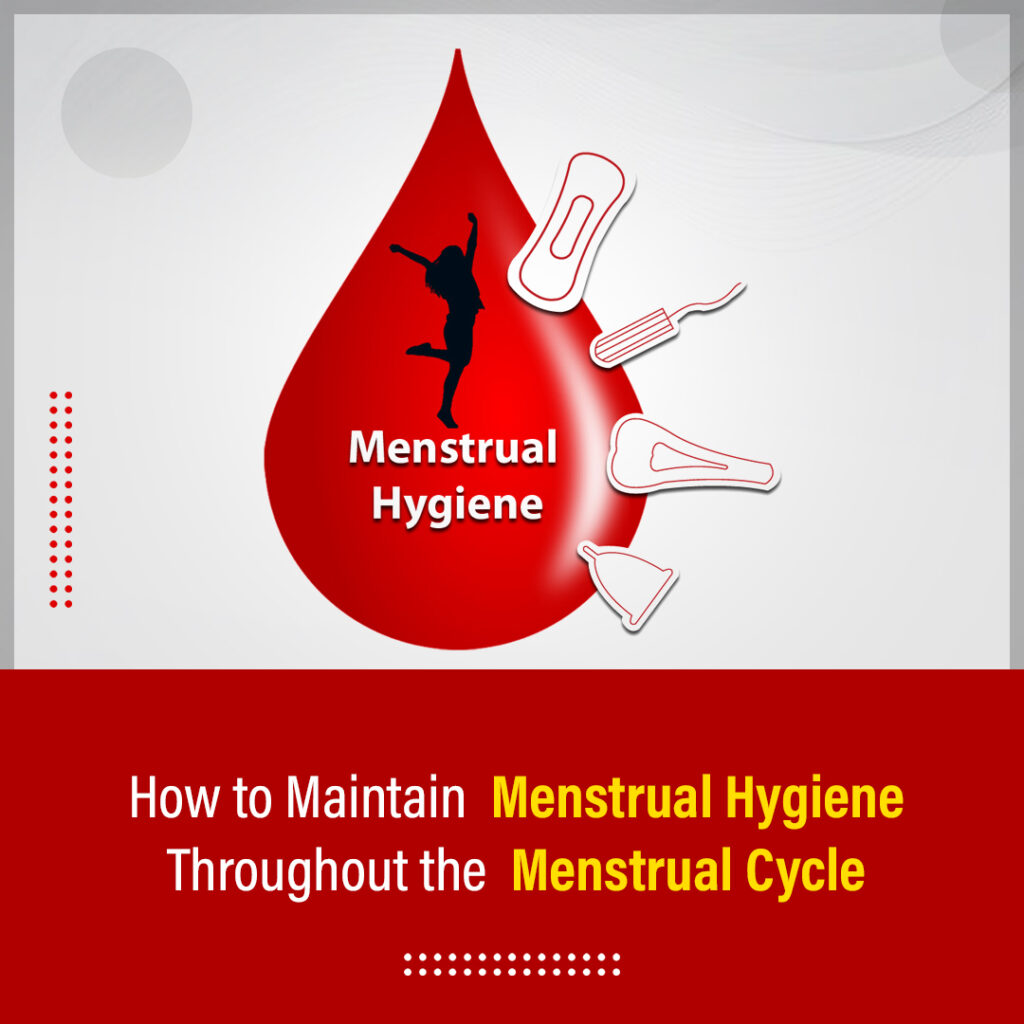The menstrual cycle is a monthly process that begins in pre-adolescence and ends with menopause and involves the removal of blood and tissue from the uterus. It is a biological and societal process with significant social and economic ramifications for all women. Many adolescent girls and women, on the other hand, do not have access to the correct scientific information and hygienic habits during their menstrual cycle, which can lead to negative health results.
Poor menstrual hygiene management can have major consequences for one’s physical and one’s mental health. To correctly manage your menstrual cycle, you must first understand how your period works, why it occurs when to expect it, and how to manage it. Women can do anything they want when they are not menstruating since they know there are reliable and hygienic options to absorb or collect their menstrual flow during their menstrual cycle.
Here are a few key behaviour’s to remember during your menstrual cycle to keep your menstrual hygiene in good shape:
- Leaving the pad on for an extended time:
Because your menstrual flow is usually heavier during the day while you’re active, the pad absorbs more blood, sweat, and sebum. It creates a breeding habitat for bacteria, so using one pad for more than four hours every day is not recommended. However, because your bodily functions slow down and the intensity of bleeding lessens when you sleep, you can safely wear a pad overnight.
- Make sure to wash everything thoroughly.
The blood creates an ideal habitat for bacteria to thrive; thus, cleaning the vaginal area at least twice a day is recommended. Even after you’ve removed your sanitary napkin, the organisms cling to your body. However, don’t over-wash your vagina and vulva; this will upset your pH balance, making you more vulnerable to yeast infections and bacterial vaginosis.
- Keep a regular record of your period.
Don’t forget to keep track of your period. Your menstrual cycle might reveal a lot about your general health.
- Use a tampon for no more than 4 hours.
A tampon should not be left in your body for longer than eight hours. It is recommended that you change it every three to four hours. Toxic shock syndrome is an uncommon and possibly fatal infection that spreads throughout the body. This is reported to happen more frequently in women who use “super” tampons, which are more absorbent.
- Avoid using scented products.
The vaginal organ is self-cleaning. Protecting the environment’s natural flora is crucial, and using conventional soap or even specific cosmetic items for intimate hygiene can harm it. Ideally, the vaginal area should be washed with warm water and no soap. Vaginitis can be triggered by feminine hygiene deodorants and sprays (its symptoms include itching, redness, and abnormally heavy vaginal discharge). Instead, you might use moist wipes or water to clean your genital area.
How to Get Rid of Used Sanitary Napkins
During your menstrual cycle, improper disposal of used napkins poses a significant risk to you and those around you. Before discarding it, wrap it tightly to keep the odour and infection at bay. After changing sanitary napkins, always wash your hands to avoid spreading viruses like Hepatitis B.
- Wear breathable clothes
During your menstrual cycle, it’s best to stay away from tight clothing and fabrics that don’t ‘breathe,’ such as synthetics, because they can trap moisture and heat, allowing germs to thrive. To stay fresh and dry, wear cotton underwear and loose-fitting clothing.
The first step in avoiding potential health concerns is to be aware of them.
At Aster Speciality Clinic, we have gynaecologists who are experienced in educating and treating women’s ailments.

